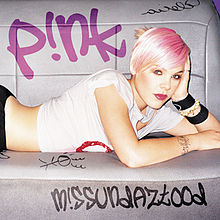Verse-chorus designs are the most common, but there’s nothing to say that you have to start with the verse all the time.
____________
Download “The Essential Secrets of Songwriting” 6-eBook Bundle, and get back to the basics of why hit songs sell.
_____________
 It may seem strange to start a song with the chorus if you consider that choruses usually give the emotional response to whatever’s being described in the verse. And how can you respond to something that hasn’t been described yet? But it really can work, and it’s worth some experimenting. The main reason you might consider starting with a chorus is the shot of energy your song would get right from the start.
It may seem strange to start a song with the chorus if you consider that choruses usually give the emotional response to whatever’s being described in the verse. And how can you respond to something that hasn’t been described yet? But it really can work, and it’s worth some experimenting. The main reason you might consider starting with a chorus is the shot of energy your song would get right from the start.
A relatively recent example is Linda Perry’s song (recorded by Pink), “Get the Party Started“, from M!ssundaztood, which starts with the chorus. (Also a good example of a successful one-chord song.)
And a quick look through the history of pop music gives us other notable examples of songs that begin with the chorus: “It’s My Party” (Leslie Gore), “I Shot the Sheriff” (Bob Marley), “Nothing From Nothing” (Billy Preston), and “Minority” (Green Day).
Choruses are usually more energetic than verses, and there are several reasons:
- Choruses often use fuller instrumentations with busier rhythms.
- Chorus melodies are usually placed in a higher range than verse melodies.
- Chorus chord progressions are harmonically stronger than verse progressions.
Beyond the energy shot that starting with the chorus provides, there’s another reason you’d consider starting songs this way, and it has to do with the lyrics. Starting with the chorus lyric provides sharp focus for your song, pulling the listener in immediately. It gets right to the point, and tells your audience, “This is what I’m talking about here.”
Starting with the chorus lyric particularly makes sense if:
- the start of the verse lyric is ambiguous or overly vague;
- the verse chord progression starts on a harmonically fragile chord.
The quality all of these reasons have in common is energy. We’re used to the gradual energy build that happens in verse-chorus designs, but there are times when you want or need to “show your hand” by getting to the point right away.
One other idea: you might want to consider using the chorus as a kind of song intro, by reducing its instrumentation. Two good examples: “Heaven is a Place on Earth” (Belinda Carlisle), and “We’re Not Gonna Take It” (Twisted Sister)
____________
Follow Gary on Twitter
 “The Essential Secrets of Songwriting” 6 e-book bundle will show you how to write great songs, harmonize your melodies, and give you hundreds of chord progressions in the process.
“The Essential Secrets of Songwriting” 6 e-book bundle will show you how to write great songs, harmonize your melodies, and give you hundreds of chord progressions in the process.
PURCHASE and DOWNLOAD the e-books for your laptop/desktop










There are no rules, you don’t have to keep your structure organized the way you wrote it, you can change it up if you find it sounds better done another way.
Sting (from The Police) had a great point, when he said in a couple of interviews (check 1997 interview on YouTube), that he always writes the chorus/hook first on his songs and then builds around it (he believes doing it any other way is a mistake/trap, because if you write a line in the verse or so, then you’ll need or you’ll be forced to write the rest of the song based upon what you wrote on the previous line).
So, writing the chorus and building around it seems to be a better way to write a song (at least according to Sting).
That way I think it’s easier to make sure that the song always points and is linked towards the chorus message (then writing the verses and the other parts, should get easier).
Check his interviews on YouTube, especially the 1997 and the Jools Holland ones (those are really great and Sting can explain what I’ve said here in a much better way).
As you say, there are no rules, and I personally have always favoured the chorus-first way of writing. But though that works well for Sting and most others, there is another way to look at all of this, which is that there are plenty of songs out there that don’t use a chorus at all, but use a verse-bridge form (“Hey Jude”, for example), or some other verse-only form. Even with, let’s say, verse-refrain structures (like “The Times They Are A-Changin'”), it’s unlikely those songs would have started with the refrain.
But I think your point that there are no rules is an important one for songwriters to keep in mind. Even if you’re a chorus-first writer, there are times when a snippet of lyric, or a melodic shape, might pop into your creative mind, and so then you might start with that.
Thanks, Ricardo, I appreciate your thoughts on this.
Cheers,
-Gary
If you were to start with your chorus, would you still go on to use verse1, verse2 & a bridge?
I have found when I start with a chorus, I often feel like verse 2 is a bit of a drag, I have experimented with the structure Chorus, Verse1, Chorus, Bridge, Chorus x2
This is rather unconventional but I think it could be worthwhile experimenting with in modern pop music, it skips the struggle of verse 2 that many writers face, maintains familiarity by fitting in 4 choruses, but keeps enough variation. I find after the second chorus you want some variation, so to return to a verse 2 feels like a bit of a lull. Any thoughts on common song structures when starting with the chorus would be great to hear about!
Thanks.
If the chorus is first, do you chart it as A or B?
Bob
Technically, whatever happens first is labeled as ‘A’. But I think tradition often dictates that the verse is ‘A’ and the chorus is ‘B.’ I’ve not seen much written about this. The beginner songwriting manual “Songwriting for Beginners” (Davidson & Heartwood) implies that they’d label a song that starts with the chorus as ABA… But that seems a little counterintuitive to me.
Good question… I’ll do some research. 🙂
-G
G-
Thank you for your interest in the question.
My thought has been that ‘what comes first is A’ seems ok, but I couldn’t find
any rule. I look forward to any enlightenment! 🙂
B-
Thank you.
Great job